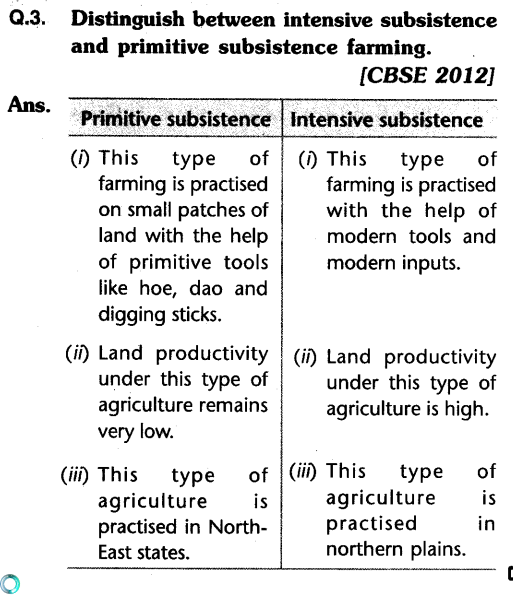Community Durability and Its Connection to Commercial Farming vs Subsistence Farming
A Comprehensive Take A Look At the Challenges and Benefits of Modern Agriculture
Modern agriculture stands at the crossroads of innovation and sustainability, providing a wide range of obstacles and opportunities. With advancements like accuracy farming and biotechnology encouraging enhanced efficiency, the market concurrently faces essential issues such as environmental deterioration and socio-economic differences. As we check out the elaborate equilibrium in between technological progress and its broader effects, the question develops: can we attain a lasting future that profits both the environment and farming communities? The course ahead requires a cautious assessment of these dynamics, welcoming stakeholders to take into consideration the capacity for transformative adjustment in farming techniques and policies.
Technical Improvements in Farming
Technical improvements in farming have actually changed the agricultural field, driving boosted performance and effectiveness. Innovations such as accuracy agriculture, biotechnology, and automation have changed typical farming methods, permitting more profitable and lasting operations. Accuracy agriculture makes use of GPS modern technology, sensing units, and data analytics to optimize field-level administration regarding plant farming. This strategy enables farmers to apply inputs like water, plant foods, and pesticides extra judiciously, decreasing waste and decreasing expenses while boosting returns.
Automation in farming has additionally driven the sector ahead, with the introduction of independent tractors, drones, and robotics. These innovations minimize labor requirements and raise operational rate, permitting for prompt growing and harvesting. Drones, specifically, supply valuable airborne imagery and data, helping farmers in keeping track of plant health and wellness and finding issues early.
Biotechnology has actually also played a pivotal role in progressing farming techniques. Collectively, these technical improvements have actually laid the foundation for a more sustainable and resilient agricultural future.
Environmental Challenges
Agriculture faces a number of ecological obstacles that intimidate its sustainability and performance. One of the main concerns is the destruction of dirt health and wellness as a result of extensive farming methods that deplete essential nutrients and bring about erosion. The overuse of chemical fertilizers and chemicals better intensifies this problem, infecting water sources and decreasing biodiversity. As a result, the lasting viability of agricultural land is endangered, requiring the fostering of even more sustainable practices.
Water scarcity is an additional significant difficulty, especially in regions where farming heavily counts on watering. Climate change is escalating this issue, changing rainfall patterns and raising the frequency of droughts. Reliable water management systems, such as drip watering and rain harvesting, are important to minimize these impacts, but their implementation remains unequal throughout various areas.
Furthermore, agriculture is Visit Website both a victim and a factor to environment change. Addressing these environmental difficulties is crucial for ensuring a sustainable agricultural future.

Economic Influences
The economic influences of contemporary farming are diverse and profound, influencing both regional and worldwide markets. Breakthroughs in technology and manufacturing approaches have actually substantially enhanced farming efficiency, leading to much more effective food supply chains and reduced prices for customers.
The capital-intensive nature of modern-day farming calls for significant investment in equipment, plant foods, and genetically modified seeds, which can be economically troublesome for small farmers. Furthermore, international market variations can influence the earnings of farming exports, making economic situations reliant on farming at risk to financial instability.
Furthermore, aids and trade policies in industrialized countries can misshape market value, influencing affordable balance and possibly disadvantaging farmers in developing countries. Overall, while modern-day farming drives economic growth, it additionally requires browsing complex economic landscapes to guarantee equitable and lasting growth.
Social Ramifications
While modern farming has actually caused substantial improvements, it also presents different social effects that require factor to consider. One major concern is the displacement of small farmers as a result of the surge of big agricultures. As corporate farming entities increasingly control the agricultural landscape, smaller sized farms usually battle to contend, leading to the erosion of country neighborhoods and traditional farming techniques. This change can cause a loss of neighborhood knowledge and social heritage that smaller sized ranches sustain.

Such practices might likewise restrict consumer selections and reduce the ability of regional neighborhoods to manage their food sources. As these social implications unfold, it comes to be important to resolve them to make certain lasting and equitable farming development.
Future Directions
Looking in advance, a number of encouraging methods for modern-day farming can deal with the obstacles encountered today while fostering lasting growth. Advances in technology, such as accuracy farming, provide the prospective to maximize source use and rise performance.
Biotechnology likewise holds tremendous pledge for the future of farming. Genetically modified microorganisms (GMOs) and genetics editing strategies, like CRISPR, can improve crop durability against environment modification, bugs, and illness, therefore boosting food safety and security. Additionally, expanding plant varieties to include even more nutrient-dense and climate-resilient alternatives might strengthen both ecological stability and human nutrition.

Verdict
Modern agriculture, characterized by technological advancements, presents both obstacles and possibilities. While developments such as accuracy farming and biotechnology improve efficiency and sustainability, they also add to environmental problems like soil degradation and water deficiency. The financial influences are substantial, leading and affecting small farmers to wider social effects. Dealing with these complexities needs a shift in the direction of lasting practices that balance efficiency with environmental stewardship and social equity, consequently ensuring a resilient future for global farming systems.
Modern agriculture stands at the crossroads of innovation and sustainability, offering a wide variety of challenges and possibilities. Furthermore, international market fluctuations can influence the earnings of agricultural exports, making economies reliant on farming susceptible to economic instability.
In addition, the extensive usage of technology and mechanization in agriculture has actually led to a decline in farming employment opportunities.Looking ahead, a number of encouraging methods for modern agriculture could attend to the obstacles encountered today while cultivating lasting growth. commercial farming vs subsistence farming.Modern agriculture, defined by technical improvements, presents both challenges and chances